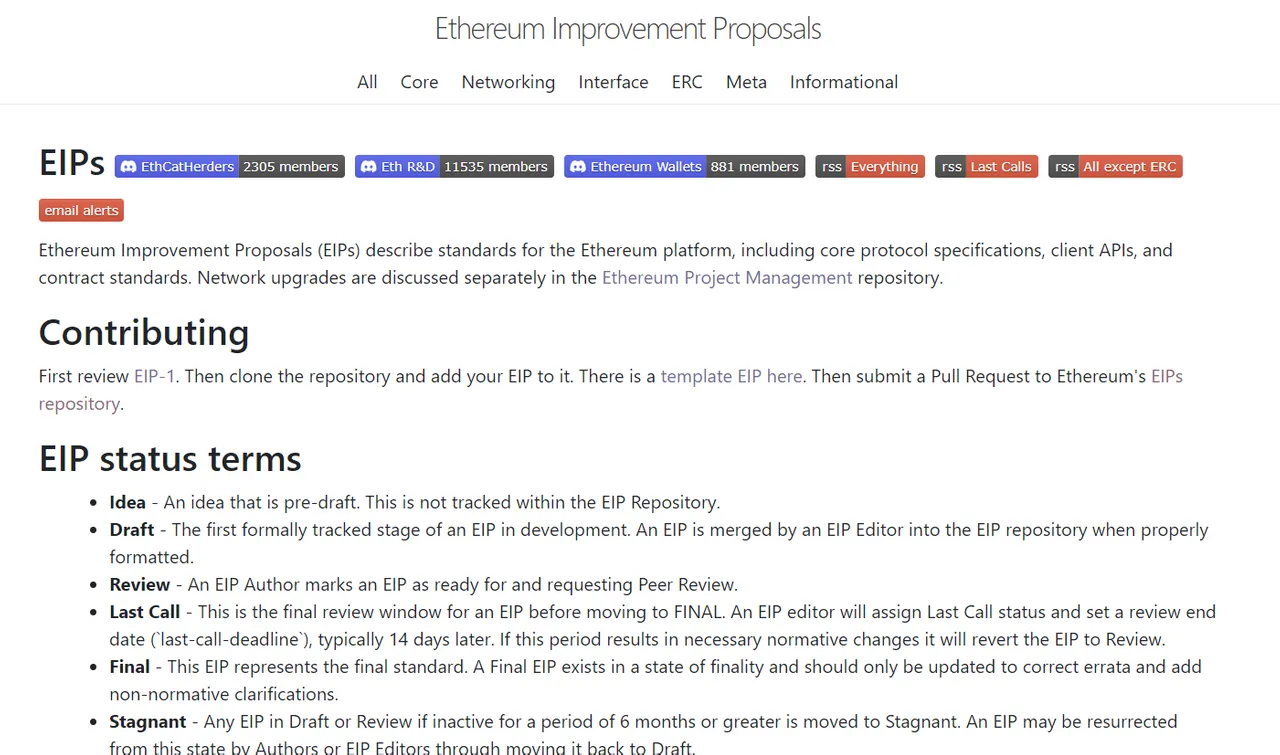
Ethereum Controversy As ERC-404 Token's Launch
Ethereum is still the number 2 Blockchain sitting right under Bitcoin but the latest advancement showcases the chains unique abilities in the development of tokens with a team of four completely bypassing the democratic process and launching ERC-404 tokens.
Crypto currency innovation often begets controversy and the latest buzz revolves around ERC-404 tokens. Named after the familiar website error code "404," ERC-404 tokens bring in a new form of tokenomics and refining token standards on Ethereum by introducing semi fungibility, fractional ownership and enhanced liquidity for non-fungible tokens (NFTs). However, their journey from conception to market adoption has been riddled with challenges and heated debates within the Ethereum community.
ERC20, the Ethereum standard is short for "Ethereum Request for Comments," typically signifies a set of technical standards meticulously vetted by the community to ensure safety, viability and usefulness. However, ERC-404 took a different route. Launched by a small team without formal documentation or consensus from the wider community, ERC-404 stirred controversy from its inception. Critics argue that bypassing the established ERC process cheapens Ethereum's development ethos, raising concerns about governance and safety.

Semi Fungible Token's
Despite the contentious launch, ERC-404's core idea of combining ERC-20 and ERC-721 standards to create semi-fungible tokens shows promise. These tokens aim to facilitate fractionalization, splitting ownership and enhancing liquidity for NFTs. The first ERC-404 token, Pandora, skyrocketed in value within days of its launch attracting significant trading volume and market attention.
However, ERC-404's rapid ascent also brought challenges, notably soaring Ethereum gas fees and concerns over technical design and safety. As traders seized opportunities to capitalize on ERC-404 tokens' volatility, gas fees reached an eight-month high prompting Ethereum observers to raise alarms about network congestion and potential vulnerabilities.
In response to these challenges, developers are exploring alternatives such as Divisible NFT (DN-404) aimed at optimizing code and reducing transaction fees associated with ERC-404 tokens. Despite attempts at collaboration between ERC-404 proponents and DN-404 developers diverging visions and unsuccessful negotiations highlight the complexities of navigating the Ethereum ecosystem.
Bypassing the EIP
As traders and investors navigate this evolving landscape, they face critical decisions about supporting the original ERC-404 implementation or embracing the upcoming DN-404 alternative. The choice carries implications for market stability, investor confidence and the future direction of Ethereum's token standards.
In the midst of controversy and uncertainty, one thing remains clear: ERC-404 tokens have ignited excitement and volatility in the crypto market. Whether they can overcome challenges, regain stability and fulfill their promise of enhancing NFT liquidity remains to be seen. As Ethereum continues to evolve the ERC-404 saga serves as a reminder of the complexities and dynamism inherent in blockchain innovation.
As ERC-404 tokens continue to make waves it's crucial to understand their underlying principles and implications. ERC-404 represents an attempt to bridge the gap between fungible and non-fungible tokens offering a unique blend of divisibility and uniqueness. By combining aspects of ERC-20 and ERC-721 standards, ERC-404 tokens aim to unlock new possibilities for tokenization and asset management on the Ethereum blockchain.
However, the controversy surrounding ERC-404 extends beyond its technical specifications. The manner in which it was introduced without formal documentation or consensus from the Ethereum community has raised questions about governance and decentralization. Critics argue that ERC-404's unconventional launch undermines Ethereum's principles of transparency and community-driven development.

Risk It For the Biscuit
Despite these concerns, ERC-404 tokens have gained traction in the market, with projects like Pandora experiencing exponential growth in value and trading volume. This success has attracted attention from both traders seeking profit opportunities and developers exploring new use cases for blockchain technology.
Nevertheless, ERC-404's rise has been accompanied by challenges, particularly regarding Ethereum gas fees. The increased demand for ERC-404 tokens has led to congestion on the Ethereum network, driving up transaction costs and hindering user experience. This has prompted calls for alternative solutions, such as DN-404, which aims to reduce gas consumption and improve scalability.
The emergence of DN-404 highlights the dynamic nature of the Ethereum ecosystem, where innovation and competition coexist. While ERC-404 may have paved the way for semi-fungible tokens, it is not immune to criticism or competition. As developers continue to iterate on token standards the future of ERC-404 remains uncertain.
ERC-404 tokens represent an ambitious attempt to push the boundaries of tokenization on the Ethereum blockchain. Despite facing criticism and challenges, ERC-404 has sparked innovation and debate within the crypto currency community. Whether it will fulfill its potential or be overshadowed by alternatives remains to be seen.
As the crypto landscape evolves, it's essential to remain vigilant and adaptable, embracing change while upholding principles of transparency, decentralization and inclusivity.
Image sources provided supplemented by Canva Pro subscription. This is not financial advice and readers are advised to undertake their own research or seek professional financial services.
